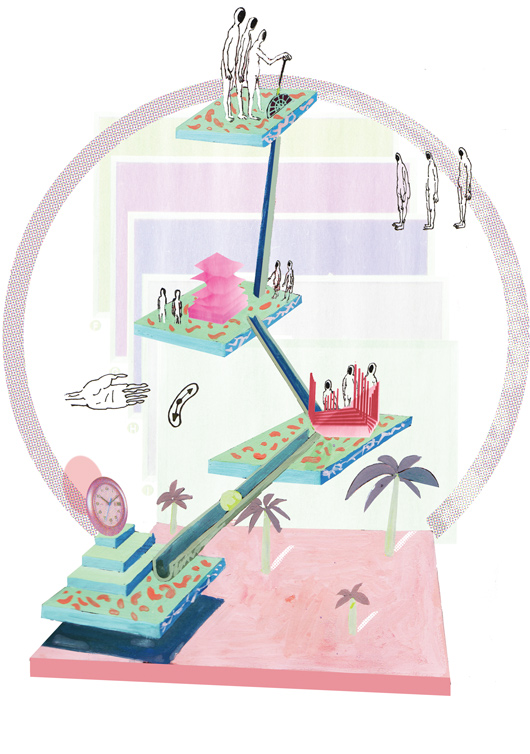George S. Day’s new book Innovation Prowess: Leadership Strategies for Accelerating Growth is an essential guide to building a framework for superior growth through innovation. This article offers a preview on how to boost your innovation ability by adhering to the three big C’s: Culture, Capabilities and Configuration.
The 3M Company has long been recognised as a bastion of innovation prowess, and it continually outperforms other diversified industrials. At the heart is a culture that believes in customer-inspired innovation and an organisation designed to listen to customers and act on their feedback. While 3M is well known for providing time for engineers to pursue new ideas and experiment, the capacity for idea sharing and joint learning is just as important. 3M also converts a high volume of ideas into growth initiatives by providing multiple sources of funding, such as Genesis grants to fund experiments.
Growth leaders like 3M, Diageo, Salesforce.com, Celgene, and LEGO see opportunities sooner, bring more and better initiatives successfully to market, and improve innovation productivity by orchestrating the three entwined elements of innovation ability:
• Culture. An organisation’s shared values and beliefs, defining appropriate and inappropriate behaviours. It is often summed up simply as “the way we do things around here.”
• Capabilities. The combination of skills, technology, and knowledge that allows the firm to execute specific activities and innovation processes.
• Configuration. The structure of the organisation, including how resources are allocated, who bears responsibility for achieving targets, and how success is measured.
Efforts to build new innovation capabilities or improve the firm’s configuration will succeed when they are supported by the appropriate cultural attributes. Conversely, a dysfunctional culture is hard to surmount. The poster child is Sony, who missed both the iPod and the smartphone revolution. As Howard Stringer, the current CEO of Sony, who was brought in as an outsider and charged with changing the company’s culture, wryly noted, “Love affairs with status quo continue even after the quo has lost its status.”
[ms-protect-content id=”9932″]
Innovation Culture
A culture has many levels and facets. At the deepest level are the traits or values that express enduring preferences or aspirations. The more accessible expression of these values are norms, which are shared beliefs about appropriate or expected behaviour. The most obvious outcroppings of a culture are the behaviours that top managers and employees exhibit.
Values and Norms of Innovation Cultures
There are no innovative organisations with shallow or forgettable cultures; there is no end of slogans extolling the special traits of innovative organizations. Innovation gurus urge firms to “share to gain,” “always look for a win-win,” “fail fast,” and “learn from failures.” Each has merit. But all reflect an all-too-common faith in “best practices.” Innovation leaders don’t follow best practices; instead they create new practices.
One of the key cultural commonalities among innovative organisations is the belief that more can be learned from the careful dissection of failures than from successes; a failure presents an opportunity to uncover and eliminate the mistake and build something better. Three other highly interrelated cultural traits seem to distinguish innovative firms.
First, these firms are willing to cannibalise their own successful products. This requires an outside-in perspective that recognises that customers will migrate to a better solution when it emerges, regardless of who provides it.
Second, there is a different attitude toward risk. These firms are willing to embrace the very high risk of innovation failure to escape the even higher risk of competitive defeat if they stand still. The likelihood of failure for any innovation initiative, especially beyond the firm’s current capabilities, is dauntingly high, so there is a great temptation to keep investing in the core business because the risk-adjusted returns seem so appealing.
The third key trait is a focus on the future. Innovative cultures downplay past and present successes, choosing to devote their energy to pursuing the next success. For instance, part of Toyota’s culture is conducting a post-mortem on successful projects to uncover opportunities for future improvement.
Leadership and Culture
The fingerprints of the leaders are imprinted on every aspect of a culture. The tone is set by the top person but is magnified by the rest of the C-Suite. Leaders populate the organisation with people who respect the leader’s values and exhibit patterns of behaviour the leaders are comfortable with. Leaders who value innovation encourage people to take risks in pursuit of new ideas and opportunities. This gives everyone the courage to take risks because they are confident that the rest of the organisation will stand behind them.
Leaders have many ways to shape the culture. One is how they spend their time; the more they devote to reviewing projects, working with teams, and recruiting talent, the faster their decision making. By understanding the project better, they can identify weak signals and inflection points the project team might miss.
Innovation Capabilities
Culture underlies and infuses everything an organisation does. Capabilities are the sum of the skills and experience the firm collectively brings to the actions it takes. Culture and capabilities have a symbiotic relationship—one can’t function without the other.
Capabilities are bundles of closely integrated skills, technologies, and cumulative learning—exercised through organisational processes. Capabilities should not be confused with assets, which are the resources a business has accumulated. Investments in plants, patents, or systems are not capabilities because these are things, not skills. Capabilities are the glue that brings these assets together.
Three capabilities are needed to ensure a firm has a superior innovation prowess, meaning it can execute the underlying innovation processes better than its rivals.
Market Learning Capability
Useful insights into market opportunities and reactions to innovations don’t emerge easily. Instead, insights must be actively sought, shared, and acted on via market sensing, sense making, applying insights, and learning from feedback. Keep in mind that all capabilities are driven by learning, where continuous exercise builds new layers of insight.
This capability may be triggered by an impending decision or strategy review, an emerging problem, or a belief that an innovation initiative requires deeper insights into customer needs. This spark begins the active search and acquisition phase to acquire relevant and actionable information, including what is already stored in a firm’s knowledge system and what managers throughout the company know.
For findings to be useful, they must be distilled to find coherent patterns and converted into usable insights. When one detergent maker decided to look for growth among non-committed users, it formed a diverse team to study these users (mostly women). The aim was to understand the pressures of their lives, their needs and wants, and their feeling about their clothes. From these deep observations, the team came up with a new way to appeal to these customers’ feminine sensibility. This ran counter to the senior managers’ beliefs about how the brand should be positioned. To overcome these beliefs, the team dramatised its findings in a one-hour “play” with scripts derived from the verbatim recordings of the consumer immersion session.
Firms with a strong market learning capability actively seek and integrate lessons from what actually happened into their innovation activities and processes. Did the market respond as expected, and if not, why not? How could the process and the methodologies be improved? When widely disseminated through the firm these lessons continue to improve practice.
Open Network Management Capability
The term open is rich in positive connotations, including expansiveness, flexibility, sharing, and ready access. It is increasingly applied to innovation processes as a consequence of (1) advances in communication networks and deeper understanding of how to coordinate diverse players with different interests, (2) the recognition by many firms “that not all the smart people in the industry work for us”; and (3) celebrated success stories such as Procter & Gamble’s Connect + Develop innovation model.
When an open innovation network is under the control of the focal firm, it operates more like a private club. Here, you tackle an opportunity with one or more collaborators you select because they have the necessary resources without unmanageable conflicts of interest.
The interwoven nature of open innovation networks requires a new suite of skills and experience that are difficult to learn but are also difficult to copy. The benefits of accelerated innovation development, a richer array of possible solutions and more ways of sharing risk with partners make the effort worthwhile.
Mapping and Engaging the Ecosystem
The skills and activities here begin with learning about possible partners, inside and outside the firm, who can contribute to a particular innovation effort. A good way to capture this learning is by creating a map of possible partners. Once partners have been identified it is useful to pool knowledge and seek the maximum number of connections to external partners—these connections are often helpful for ensuring that selected partners will readily integrate into the innovation efforts.
Identify and Contain Risks
Open innovation networks bring a whole set of new and different risks to identify and contain. Probing the roles and linkages in the map of the ecosystem exposes two kinds of risk—each requiring a specific action plan: (1) co-innovation risk, stemming from your dependence on others to innovate in parallel; and (2) adoption chain risk, which is the extent to which partners will need to adopt your innovation before consumers can actually assess the full value proposition.
Adaptive Development Capability
Most firms use some form of a phase-gate or stage-gate development process to bring their innovation concepts to market. This process breaks the development process into a natural sequence of steps needed to move a chosen concept to launch. Each stage begins with a gate or go/no-go decision point, when senior management reviews progress with the development teams and decides whether to proceed to the next stage. Thus there is a lot of attrition as each stage becomes another filter. This enables “pay-as-you-go” project funding, with resources available for the next step only when there is acceptable progress. It has a seemingly tidy, linear, and sequential appearance, as befits its origin in NASA engineering projects. In reality, it is iterative, halting, messy, and time consuming.
There are striking differences among firms in their development capability. According to Arthur D. Little, the top performing firms are five times as productive as the average. That is, they realise five times as much output in terms of new product revenues or profits, for the same investment in R&D and new product development costs and time.
The most capable firms have improved their development processes in many ways. First, instead of a one-size-fits-all stage-gate template, there will be heavyweight and lightweight versions. An “efficient” standard approach to each gate (appropriate for small-i projects) sets early targets, under the assumption that learning during later stages will reinforce and elaborate the early stages. This confers too much certainty to the process. In reality, as development of a BIG-I innovation proceeds, there will be surprises (both fortuitous and calamitous), and underlying assumptions will be articulated and challenged—requiring rethinking.
Further gains come from moving to “leaner” gates. Instead of the lengthy and time-consuming preparation of gate deliverables by the team, a brief document with a few backup slides is all that is expected. The gatekeepers are expected to arrive at the meeting already knowing the project, and are simply informed at the gate review about the risks and commitments to be made. Best-practice firms are simplifying their processes, and focusing more on the deliverables and clarity of responsibilities.
Innovation Configuration
A robust culture and well-honed innovation capabilities are not enough to ensure superior innovation ability. The final ingredient is an organisational configuration that can align all the elements, allocate resources effectively, allow people to perform to their potential, and assign responsibility for achieving the results. A configuration is not complete until the entire C-Suite concurs wholeheartedly with answers to the following questions:
• Who is accountable at the highest level for reaching the growth objective? What happens when the growth objective is missed?
• How are resources (people, investment capital, and annual budgets) allocated? What happens when resources are trapped in the core?
• How do you keep score? What are the key metrics in the innovation dashboard? What incentive is there for individuals and teams to meet the targets on these metrics?
• Who is responsible for identifying, selecting, and training people, and then assigning them to teams?
Designing the Organisation to Innovate
Rethinking an organisational structure is not like zero-based budgeting or starting with a blank sheet of paper. Instead, there is a history of hits and misses to learn from and inspire improvement. This requires everyone to agree on the persistent inhibitors to growth.
Growth Inhibitor One: Diffused Accountability
You are likely a victim of this inhibitor if you are congenitally late to market with the small innovations needed to stay ahead of competition and to adapt to new customer requirements in the core business. A frequent structural reason is unclear accountability for results, which is exacerbated by shifting priorities and too many projects competing for the same resources.
Careful diagnosis of this inhibitor will reveal whether it can be abated with proper oversight by a working committee of senior people using aggressive portfolio reviews, and by assignment of small cross-functional teams to priority projects. Although there may be fewer projects at any given time, each is completed faster, and the result is more projects completed.
Growth Inhibitor Two: Square Peg, Round Hole
Force-fitting BIG(ger)-I initiatives into the existing organisation can be a major growth inhibitor. Cargill Corp. has grown and prospered as a large-scale player in the global agriculture and food-supply chain. In common with many large, mature companies, it felt it was not fully exploiting opportunities that didn’t fit comfortably within an existing business unit. Existing incentives in the firm actually discouraged the managers of businesses from taking bigger and longer-term risks, even with the promise of high returns. For example, the Cargill division selling standard ice-melting chemicals to state road departments had mastered a low-cost supply chain. This was not a supportive setting for a novel de-icing chemical—an epoxy overlay that inhibited the formation of ice—sold for critical applications such as bridges and freeway ramps. The business model didn’t fit the existing structure, and required new skills to make a sale.
Many organisation models have been proposed for overcoming the problem of a square peg in a round organizational hole. Cargill successfully created a full-service group called the Emerging Business Accelerator, to shepherd attractive opportunities from outside the core by staffing, funding, and monitoring those opportunities until they could be spun out or folded back into an established Cargill business. This is an example of what Wolcott and Lippitz designate as “focused organisational ownership” and “dedicated resource authority.” There are many variants, depending on whether organisational ownership is diffused and opportunities bubble up within the operating businesses, or resources are dispersed in an ad hoc fashion, or there is a dedicated budget or strategic reserve for noncore opportunities. The key is to make sure opportunities are not smothered or starved of resources by being forced to fit uncomfortably within an existing operating unit.
Next Steps
There is no room for complacency within either growth leaders or laggards about their innovation ability. Leaders should be looking over their shoulders and constantly seeking improvements to stay ahead. Growth laggards need to dissect the three C’s of their ability to learn what is holding them back.
Excerpted from Innovation Prowess: Leadership Strategies for Accelerating Growth, by George S. Day, copyright 2013. Reprinted by permission of Wharton Digital Press.
About the Author
George S. Day is the Geoffrey T. Boisi Professor and co-director of the Mack Center for Technological Innovation at The Wharton School, University of Pennsylvania. Past chairman of the board for the American Marketing Association, he has served as a consultant to GE, IBM, Medtronic, Merck, W.L. Gore & Associates, and other corporations. His books include Strategy from the Outside In and Peripheral Vision, among others. Day lives in Villanova, Pennsylvania.
[/ms-protect-content]



































